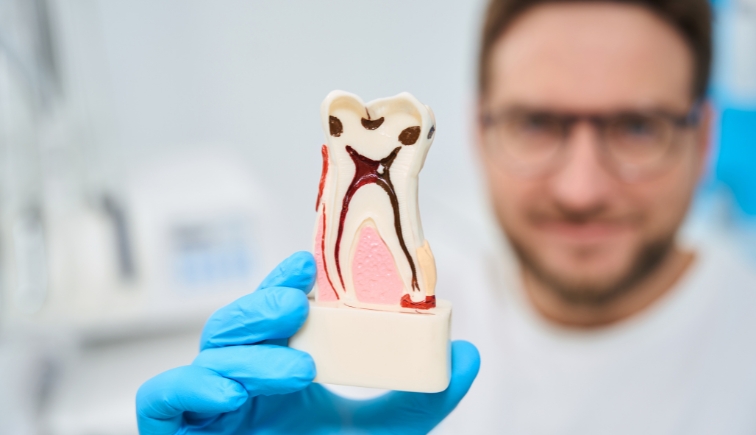Signs of Infection After Root Canal: Risks and Recovery Tips


When you’ve just gone through a root canal, the last thing you want is more discomfort. But sometimes, something doesn’t feel quite right — and that’s when you start wondering: Is this normal healing, or could it be an infection? Spotting the early signs of infection after a root canal can make a big difference in how fast you recover and avoid further complications.
Let’s take a closer look at what to watch for, what puts you at risk, and what you can do to feel better faster.
What’s Normal After a Root Canal — and What’s Not
Some soreness is expected after a root canal. Your tooth just went through a procedure that cleaned out infected pulp and sealed the inside to prevent future problems. Mild swelling, tenderness when chewing, and a dull ache for a few days are common.
But if pain lingers, worsens, or is joined by other troubling symptoms, it’s worth taking a second look.
Warning Signs You Shouldn’t Ignore
Here are the most common red flags that might suggest an infection is setting in after your root canal:
1. Persistent or Severe Pain
If the discomfort continues beyond a few days or becomes sharp and throbbing, this could be a sign that bacteria have made their way back into the tooth or surrounding tissues.
2. Swelling That Doesn’t Go Down
A little puffiness is normal at first, but if your face or gums continue to swell — especially if the swelling spreads to your jaw, neck, or under your eye — an infection could be brewing.
3. Pus or Discharge
Any discharge near the treated tooth or from the gums is a major warning sign. This could mean an abscess has developed, which can be dangerous if left untreated.
4. Fever or General Illness
Feeling run-down, running a fever, or experiencing chills? That’s your body’s way of saying it’s fighting something — and it may be an infection.
5. A Bad Taste or Odor in Your Mouth
This unpleasant symptom may come from draining pus or trapped bacteria — not something to ignore.
6. Tooth Discoloration
If the treated tooth starts turning darker than the rest, especially after you’ve already had the procedure, that could signal internal problems.
What Causes Infection After a Root Canal?
Even though root canals are designed to remove infection, bacteria can still sneak in under certain conditions. Here are some of the common reasons a root canal might become reinfected:
- Incomplete cleaning: If any infected tissue is left behind, it may flare up again later.
- Leaky fillings or crowns: If the final restoration isn’t sealed properly, bacteria can get in and undo all the work.
- Cracks in the tooth: Hairline fractures can be hard to detect, but they give bacteria a shortcut straight to the root.
- Complex root structures: Some teeth have extra canals or unusual shapes that are harder to clean completely.
Recovery Tips That Make a Real Difference
While most root canals heal without a hitch, there are a few simple things you can do to reduce your risk of infection and speed up recovery:
1. Follow Your Dentist’s Instructions
It sounds obvious, but not finishing your prescribed antibiotics or skipping a follow-up appointment can allow infection to creep back in.
2. Get That Crown or Filling Done on Time
Delaying the final restoration gives bacteria a perfect entry point. Seal that tooth up as soon as your dentist says it’s ready.
3. Avoid Chewing on the Treated Side
Give your tooth some downtime while it heals. Avoid crunchy, sticky, or chewy foods that might stress the area.
4. Keep Up with Good Oral Hygiene
Brush gently but thoroughly. Floss daily. Use an antiseptic mouthwash if recommended. A clean mouth is a healthy mouth.
5. Watch for Symptoms
Stay tuned in to how your tooth feels. Don’t hesitate to contact your dentist if something doesn’t feel right — especially in the first few weeks after treatment.
When to See the Dentist Again
If you’re experiencing any of the warning signs listed earlier, don’t wait for things to get worse. A follow-up exam and possibly an X-ray can reveal whether the root canal needs to be redone, or if another treatment is needed — like an apicoectomy (a minor surgery to remove the tip of the root).
Timely care can prevent the need for extraction and keep the infection from spreading.
How Reinfections Are Treated
If your root canal becomes infected again, your dentist or endodontist might recommend:
- Retreatment: The original root canal is reopened, cleaned out more thoroughly, and resealed.
- Surgical options: In some cases, a surgical procedure might be needed to clean out stubborn infection from the root tips or surrounding bone.
- Tooth extraction: If the damage is too severe, removing the tooth might be the safest option. A dental implant or bridge can help fill the gap.
Can You Prevent an Infection After a Root Canal?
Absolutely — and most people do. While no procedure is guaranteed to be 100% risk-free, the vast majority of root canals are successful when proper care is taken before, during, and after the treatment.
Here are a few ways to reduce your chances of infection:
- See a qualified endodontist or experienced general dentist.
- Complete all recommended follow-ups.
- Avoid tobacco during healing — it slows the body’s ability to fight infection.
- Keep your mouth clean and don’t ignore small symptoms.
It’s easy to panic when you start feeling pain after a dental procedure, but root canal infections are not a given. With today’s modern techniques, most treatments are smooth and complication-free.
Still, it helps to be informed. The more you know about what to expect — and what’s not normal — the quicker you can react if something seems off. And the faster you act, the better your odds of protecting your tooth and avoiding more complex treatments.
If your tooth is bothering you after a recent procedure, don’t wait it out. Reach out to your dentist and ask questions. They’ll help you figure out what’s going on and get you back on track to healing.


